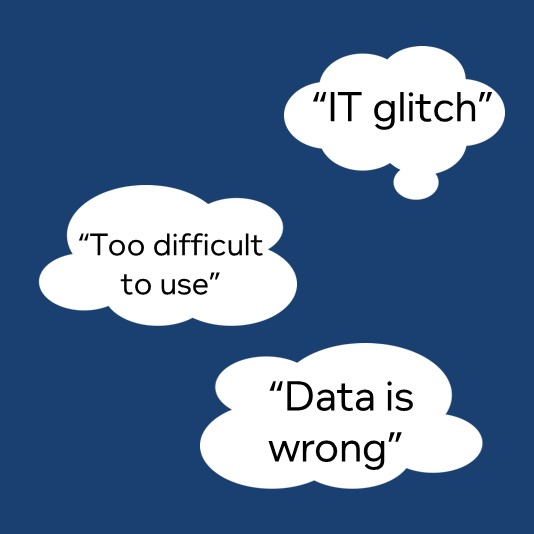Technology is easy to blame.
I realize there have been times when I have fallen into the trap of being too quick to blame poor technology.
Client Problems
When clients talk to me about how we can help them, there is almost always a technology failure in the background.
They tried using spreadsheets, SharePoint, or something IT built for them – and the technology was not up to the task.
Of course I immediately think they are right and that we can do a better job with our technology – LiveDataset.
But wait.
Let’s look again at what I just said: “I am confident that WE can do a better job with … LiveDataset”. Saying WE can do it better with LiveDataset is not saying anyone can do it better with LiveDataset.
Does LiveDataset Solve Problems on its Own?
I wish! I am proud of LiveDataset, our quasi-magical data management platform. We find it easy to quickly configure datasets and connect them together to form a powerful solution.
But when I think about the realities of most client projects — I am sure that many would not succeed if clients started using LiveDataset by themselves.
This is a general problem faced by many technology providers. If you build software that can be used to build applications, the success of those applications depends on people and skills. You absolutely need the right people with the right skills.
Let’s look beyond LiveDataset and consider SharePoint as a well-known technology used to build applications. Many organizations use SharePoint for simple business processes. E.g. building internal applications that gather and share documents between people in different roles.
Why Do Only Some SharePoint Projects Succeed?
Often IT installs SharePoint just because it was included in their Microsoft enterprise licence. Lacking a budget, SharePoint is left without a business sponsorship or anyone internally driving its use.
When business users try to use SharePoint, they find it is much harder than creating personal documents in Microsoft Office. They face technology challenges around authorizations and coding. But often it’s the non-technical aspects that undermine projects.
The way applications need to be built is very different to how users create personal documents. The software may look broadly similar, but building an application for many people needs:
- Carefully analysis of what the application must do.
- Understanding how each of the different people will interact with it.
- Designing an overall solution that will be robust and scalable.
- Project management, organizing a team and aligning stakeholders.
Where SharePoint has been successful, the key to success is clear ownership and a multi-disciplinary team.
A team that combines SharePoint experience, IT, and business analyst skills. A team that can manage all the complex components, including:
- Servers, security, and operations.
- Application coding, project management, and data management.
Multi-Disciplinary Teams Succeed
There is no value in using expert technologists if they are not building what the business needs.
A great team can make a project succeed without the best technology. So long as you have people with the right business and technology skills they will find a way to create a decent solution even if the software is not ideal.
Of course, having better technology means the team can do more projects to a higher quality. Creating applications that are easier and more reliable.
Don’t Start with the Technology
Ultimately the technology is just a tool for how your project team solves a problem. Before selecting technology, decide what problem to solve and who is best placed to solve it.

